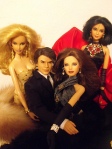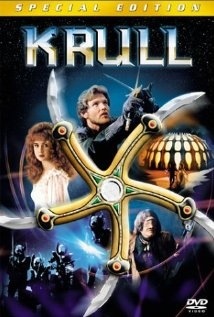WARNING: Spoilers for 30-plus year-old movies and books below.
Oft times, translating sci-fi from the written page to the screen is challenging. Film is a visual medium and so much of science fiction is conceptual. It’s hard to get the true depth of the emotion of a story across in an explosion or CG starship battle sequence. But, sometimes it works. And sometimes it works even when the film strays away from the source material to the point at which they become two entirely separate entities. The book is still the book. The movie, which it might have some ties to the source material, is something entirely new.
I recently read two books that are the poster children for this. One for the first time and the other for the first time in three decades. As I was reading both, I realized each of these could be made again – rebooted, if you will – being completely faithful to the story and you would have a film that was as good, maybe better, than the original. Both are classics in the sci-fi book and movie world and both, if done faithfully, would tell quite different stories than the films which they spawned.
First up is Pierre Boulle’s novel La Planète des Singes, or as we non-French speakers know it, Planet of the Apes. Though I’ve known the movies all my life, I’d never read the book until recently.

Now, if you think you know this story from countless weekend all-night movie marathons featuring the Charlton Heston/Roddy McDowell classic on your local TV station back in the 70s and 80s, well, you’re only partially right. While the movie shares the same name and has astronauts from Earth landing on a planet ruled by apes, it has little else to do with the book.
One of the biggest differences is tonal. Boulle’s novel was a social satire more along the lines of George Orwell’s Animal Farm. The apes have taken over, displacing man but, ultimately, bringing about the same failings Boulle saw in the human race. The underlying themes of the book differ from those in the original movie series, which focuses on racial commentary of 1960s America. It also differs from the modern movie franchise’s theme of science run amok and “Hey! I’ve got a bunch of money for fancy CG effects.”
We won’t even talk about the Marky Mark version.
I do truly love the original film, and even it’s sequels including the more cheesy ones, and the TV series and the Saturday morning cartoon. There’s just something about Roddy McDowell in an ape costume you gotta love. I also enjoy the new series of movies, different as they are to anything that came before. And, okay, I’ll admit I sneak the Marky Mark version into my “so bad it’s good” movie rotation now and again. All three versions, however, do have some snippets of Boulle’s original story, with almost all of the original movie series having a plot point or story theme embedded into each movie.
I firmly believe you could take the original book and faithfully translate it onto the movie screen in a way that hasn’t been done previously and you’d still end up with a great, albeit entirely different, movie. I think the type of dark satire the book represents is much more accepted by movie audiences now. The themes of over reliance on technology, and especially the complacency of the humans who originally inhabited the planet which lead to the rise of the apes, would resinate more now than they did when the book was originally published.
Advances in special effects would also make it a much more practical movie. In the book, the three astronauts land on a world that is much like the world at the time Boulle crafted the story. It’s a modern world with cars, apes in contemporary clothing, and all the modern conveniences. This was considered too expensive in the original Planet of the Apes movies, and so a more primitive setting was used, though you did see a bit of the modern ape world at the end of the Marky Mark version.
Probably the biggest issue with making a more faithful version of the book wouldn’t be themes or effects. It would be nudity. American culture implodes at the sight of a naked female breast. Let’s not even speculate about a serious film where male and female “naughty bits” are seen though the entire film. In the novel, the apes and humans have switched places with the apes wearing fine suits and the humans roaming the jungle naked. There are also parts focusing on the sexuality of the primitive humans. Other translations of classic sci-fi books to the screen have “covered up” nudity in the original works with little or no impact to the story. The recent adaptation of Edgar Rice Burroughs’ A Princess of Mars – John Carter (a wrongly maligned movie, in my opinion) – has the actors clad in clothing and armor instead of running around Mars naked, but in the Mars series of books, the nudity is more for teenage titillation and not an integral part of the story.
For so many reasons, the page-to-screen adaptation of Planet of the Apes won’t ever happen – least of which is it really wouldn’t lead to a billion dollar franchise. But it would be cool if it did.
The next film is one of the best sci-fi movies ever made, and if you went back and made a faithful version of the book, it would probably be an even greater movie.
 The book is Philip K Dick’s Do Androids Dream of Electric Sheep. The movie, of course, is Blade Runner.
The book is Philip K Dick’s Do Androids Dream of Electric Sheep. The movie, of course, is Blade Runner.
There actually is a good bit of the basic plot from Do Androids Dream of Electric Sheep in Blade Runner – Rick Deckard hunting down androids – and many of the same characters, though some are renamed for the movie. But while the movie is more of a sci-fi noir detective novel, the book delves more into ideas of reality, belief, morality and status. There is no electric sheep in Blade Runner and while you get the story about the near extinction of animal life, you don’t get the whole sub-plot of the status owning a real animal holds and the embarrassment Deckard and his wife (yeah, he’s married in the book) feel at owning an electric sheep instead of a real one, even though no one knows.
Mercerism, the pseudo religion where people use devices to plug in and feel group empathy, is an underlying theme to the book as is the use of mood organs where you can dial up any emotion you want to feel. Just these two things alone would make for a drastically different movie. Add in Fred Friendly and his Friendly Friends, Deckard’s dynamic with his wife and his exploration of empathy toward the androids he’s tasked to retire and the lack of empathy on the part of the androids and you really send it into an entirely new realm.
Lost would be some great moments like Rutger Hauer and “All those moments will be lost in time… like tears in the rain. Time to die.” But you’d get a much deeper character in Deckard. One who is really struggling with the idea that sometimes it’s better to do something wrong than something right. That might be the hardest thing to take from page to screen, but it’s a message that would be a powerful one.
A faithful adaptation of Do Androids Dream of Electric Sheep would have much more social commentary than Blade Runner – social status, religion, drugs, etc. – but it would be a deeper, much more complex film with much more three dimensional characters. I’m not criticizing Blade Runner. It’s truly a masterpiece of sci-fi cinema, but it only scratches the surface of the book.
And that’s where the problem comes in and why you’ll never see such an adaptation. This would be a much more introspective movie, which is something that’s hard to do. There would also be minimal action, though a similar bleak, crumbling futuristic landscape could be fantastically rendered on the screen.
Both of these unmade, faithful movies sound great in my head, but a faithful adaptation doesn’t always work. But, in the right hands, you could potentially have films that would surpass the excellent, classic movies that preceded them.
















Recent Comments